Ice is a tricky form of water, frozen in place, suspended above ice cold; tricky this week because the edge of the ice changed day by day, and especially overnight when temperatures sometimes dipped below freezing, then thawed during daytime highs. The line between ice and water seemed in constant motion, with open water at a premium, mostly along the edges of marshes and lakes, slowly thawing toward the centers.
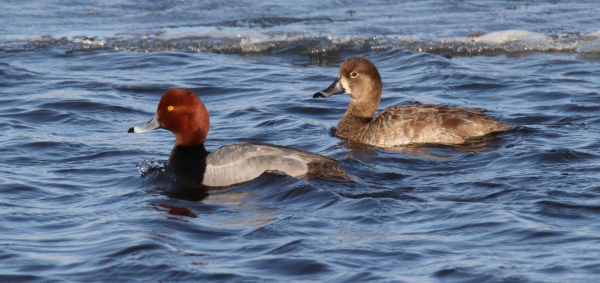
It seemed there would be more waterfowl in the area if there was more open water, especially if there was at least one ice-free lake. But realistically, with thousands of geese on hand including 5 different species, plus the most northern-thinking ducks, it was an interesting week of bird photography, creating kind of subtle images, so why not make ice the theme? On one hand, the ice didn’t seem to deter the geese from standing or lying on it, and the water couldn’t have been a big attraction considering its temperature at the edge of the ice, but the frozen lakes provided open views of the surrounding area, where geese could feel comfortable resting.
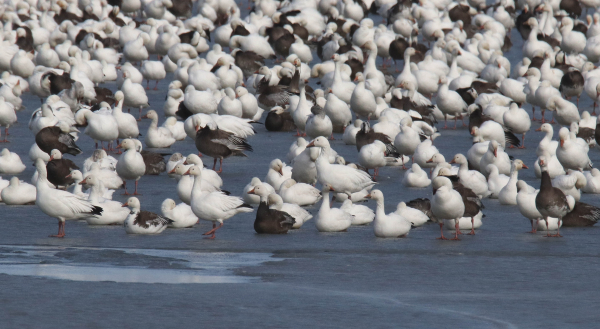
Ducks were definitely more water-oriented, and many seemed preoccupied with pairing, especially Redheads, Ring-necked Ducks, and Common Goldeneyes; although Northern Pintails and Mallards were conducting mating flights regularly in some areas. I mostly stayed within 4 miles of home throughout the work week, partly due to the sketchy weather, but also because there were ample geese and ducks close by with occasional raptors passing through. Beyond my 4-mile area, birds were scarcer and more scattered, so staying closer to home was a good thing, and it emphasizes what an important area this is as a stopover site for 5 species of migrating geese, and as a stopover and nesting area for 16 species of ducks.
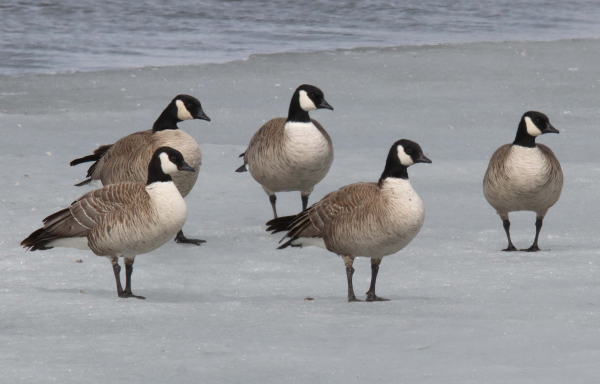
Back to the ice: While I managed a few photos of waterfowl and gulls near the edges of the ice, or on the ice through Saturday, when I had the idea of using ice as a theme for this article, Sunday seemed to be a breakthrough day. It was one of those “when you least expect it” days, in that it was extra-windy out of the northwest and overcast, but as the sky began to clear by mid-afternoon, the afternoon’s action increased and thrilled me flock by flock, bird by bird, until the sun was low, mostly within 4 miles of my office, mostly south.
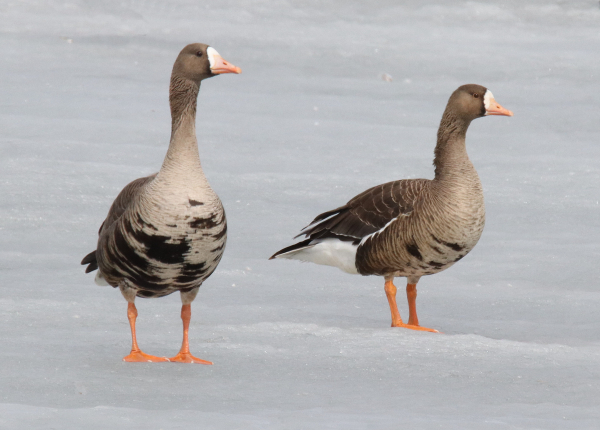
While I was focused on publishing this issue of The Birding Wire, Tuesday I took a quick drive south, having seen the usual goose action above Melody’s Marsh I thought I’d see if there were any new ducks on hand. But I wasn’t prepared to see the wetland covered white by Snow Geese! There must have been 3,000 Snows, with the other 4 species represented too, but literally every ice-covered part of the marsh – most of it (4/5ths) – was topped by Snow Geese. It gave me another chance to take a couple more photos of the regal waterfowl at the edge of the ice.
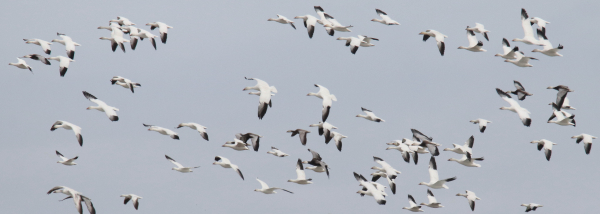
The future of outdoor ice will be fleeting in the days ahead, as warming temperatures thin ice from the top and from the warming water below, plus the wave action produced by strong winds from one direction, then another are increasing open water areas. That’s OK though, because at this point ice is just a prop. The birds will remain, migrate, and be replaced by other birds as time passes and the season progresses. The season of water and ice will be just a memory – until November. In the meantime, enjoy the changes in the spring season as the daylight periods increase, temperatures warm, and the numbers and variety of birds increases!
Article and Photographs by Paul Konrad
Share your bird photos and birding experiences at editorstbw2@gmail.com